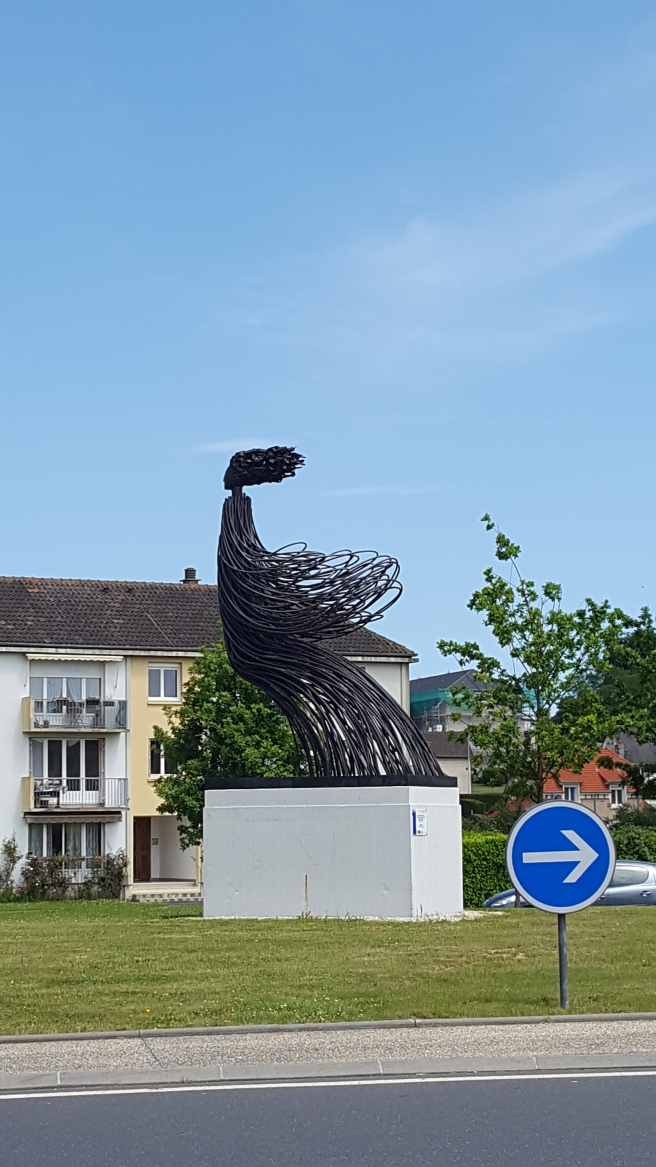This is part of a series of posts about the city of Bayeux in Normandy, France. See the other posts here.
I’ve written about our tours to various D-Day spots and Mont St. Michel, but here, I’ll write a bit about Bayeux, the charming city we stayed in while we were in Normandy.
Bayeux was the first city to be liberated during the Battle of Normandy (aka, Operation Overlord, which includes but is not limited to D-Day) and because it was used as a headquarters of sorts, it miraculously escaped destruction via the bombing raids that the Allies completed throughout the region. Those same raids completely destroyed many other cities in the area, including Saint-Lô, Le Havre, Falaise, and Caen.
Bayeux is home to a couple of pieces of incredible Medieval history: the Bayeux Cathedral (aka, the Cathédrale Notre-Dame de Bayeux) and the Bayeux Tapestry, which I’ll write about in separate posts.
Memorial Museum of the Battle of Normandy
Bayeux is also home to the Memorial Museum of the Battle of Normandy. I didn’t take many photos of it so I won’t write a separate post but I highly recommend a visit, especially if you’re not up to speed on Operation Overlord (aka, the Battle of Normandy) and Operation Neptune (aka, D-Day). The museum does a great job of explaining all of the battles, military strategy, equipment, challenges, and other aspects of Operation Overlord. That will help you better understand things when you tour sites related to the various battles.
Small and charming and full of tourists
Bayeux is a fairly small city, perhaps more of a large town. There is a main street, most of which is closed to cars, that runs through the center of the city and everything is within an easy walk. There are also plenty of tourists – at times, I felt there were more Americans and Brits there than French people and I wondered if they got tired of having their city overrun by tourists.
It’s so small that we ran into several people multiple times, including a lovely Canadian couple we met when we took each other’s family photos outside the cathedral and several people from our various tour groups. We ran into a mother-daughter pair from our D-Day tour while waiting in line for the tram at Mont St. Michel and then ran into another couple from our Mont St. Michel tour one evening at dinner and then again days later on the train platform as we waited for the same train to Paris. It was so funny that we kept seeing them that we ended up taking our photos with each other. It was nice to see semi-familiar faces throughout our trip.
I was also surprised that more people there didn’t speak English, given the tourism from English-speaking places. Don’t get me wrong – I don’t expect people in other countries to speak my language and I am often pleasantly surprised and grateful at how fluent so many people are throughout Europe in English even where tourism isn’t a huge deal. It was a nice opportunity to practice my French and although I am nowhere near fluent to say the least, I got by and I picked up some new words and phrases. I was pleased that I was able to complete multiple transactions and some basic conversations all in French – I’m sure not without several mistakes but it’s a start.
I actually cringed at an American couple who sat behind us in a restaurant – they were perhaps the stereotypical American tourists who make zero attempt to learn about the place they were visiting or to even try to speak the local language. I mean, anyone can throw in a “bonjour” or “bon soir” and a “merci” or “s’il vous plaît” – just making a small effort is better than nothing. Instead, they responded to the server’s “bon soir” greeting with monotone “hi”. At one point, they spoke about their upcoming visit to Mont St. Michel (pronounced something like “mon san michelle” but they Americanized as “Mount Saint Michael”) and then wondered aloud what the hell a crêpe is when they saw it on the menu. They also seemed to have very little interest in the history of the area. We were like “why did you choose to visit here if you know and care nothing about where you are??”
To my fellow Americans – please, if you’re going to visit another country, take a bit of time to learn at least basic greetings and polite phrases (please, thank you, excuse me, etc) and learn a little bit about their customs, food, and culture. And don’t assume everyone speaks English. OK, enough of my PSA…. 🙂
Street scenes
Throughout this small city are flags representing countries involved in the Battle of Normandy, including German flags. The flags are hung in banners all up and down the main street and it reminded me a little of the Tibetan banners of flags I’ve seen in photos. Since we visited during their official D-Day remembrance and celebrations, there were also several D-Day signs displayed.
The city feels very Old World Charming, with a small river that runs through town and powers at least two water wheels. You can see some flashes of modern quirk with the dog and gnome statues (these were displayed in front of 2 different shops) and a yarn-covered bicycle.
Libertad
I’ll close with a picture of this sculpture Libertad, which caught my eye. She stands in the center of a roundabout near the train station and I couldn’t resist snapping a photo. According to the Internet, she is “a symbol of freedom and a figure of resistance”. I think she’s beautiful.













